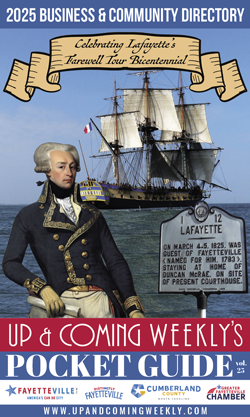Doc Watson: Wisdom from an Appalachian renaissance man
- Details
- Tuesday, 14 October 2025
- Written by D.G. Martin

 Whether you are an expert in folk music or if you can’t tell a banjo from a mandolin, a new biography, Doc Watson: A Life in Music, by Eddie Huffman, will draw you in. Along the way, you’ll discover not just Doc’s story, but the rich history of our state and the impact of its traditional music.
Whether you are an expert in folk music or if you can’t tell a banjo from a mandolin, a new biography, Doc Watson: A Life in Music, by Eddie Huffman, will draw you in. Along the way, you’ll discover not just Doc’s story, but the rich history of our state and the impact of its traditional music.
Huffman, a Burlington native and current Greensboro resident, confesses that he was more a fan of the pop music and rock-n-roll of the ‘70s and ‘80s of his youth, “dismissing country music as that cornball stuff they played on Hee-Haw.”
But he poured himself into Doc’s world: tracking down rare recordings, listening to every album, combing through archives across the state and beyond, watching old television clips, reading concert reviews, bootlegs, radio transcripts—and more.
Folks in the High Country in northwestern North Carolina welcomed him in, introduced him to people who knew and loved Doc, and even drove him through the backroads and hills that shaped Doc’s world.
Huffman gives us a close-up look at what it was like to grow up in the mountains near Boone in the 1920s and ‘30s, introducing us to Arthel Watson, the child who would one day be known as Doc.
You get the feeling that young Arthel would have happily welcomed us into his world, which was full of love—and full of hardship. In Deep Gap in Watauga County, his family had no running water, no electricity, and no insulation. Blind from toddlerhood, Watson was keenly fascinated with sound. He made instruments out of whatever he could get his hands on—from pots to cowbells—and delighted in sitting on the porch listening to the wind blowing through the trees.
Huffman paints a portrait of Watson as a jack of all trades, an Appalachian Renaissance man. He could have made a good life as a farmer, a carpenter, an electrician, a writer, a preacher, or just about anything that called for steady hands, a clear mind, and a generous heart.
Huffman’s book is, of course, not a self-help book, but it offers a powerful example: a life shaped not by ease or fame, but by courage, grit, and quiet humility. Here are just a few takeaways that reverberate through Huffman’s thoughtful exploration of Watson’s
life and legacy:
1. Take things apart… and creatively put them back together. “You can’t really love something until you understand it,” Doc said. As a boy, he tinkered with record players and homemade instruments. Later, he wired his first home by hand. Music was no different—he took songs apart, note by note, then put them back together in his own way. “I figured I’d better build on it,” he said, “so I’d be at least halfway original.”
2. Embrace… and exploit your limitations. Over and over, Doc turned his blindness into a strength. He could guess with accuracy how fast a car he was riding in was going, he could avoid stepping in potholes on a dirt road that his sighted friends stumbled into, he could identify 16 different birds singing, and he could chop wood with an axe with a crooked handle. After a stint at the School for the Blind and Deaf in Raleigh, Doc decided that was not the place for him and returned home. So, he had more free time on his hands than some sighted teenagers who had to attend school or work full-time. This allowed him to lean into his passion and become a master.
3. Grieve... and move forward. After the tragic loss of his son and musical partner, Merle, Doc Watson nearly gave it all up. But a dream—Merle guiding him from a desert toward light—changed his mind. So, Doc kept playing, knowing Merle would not want him to quit. And with his family, he started MerleFest, a tribute that still brings thousands together each year in Wilkesboro to celebrate the music they both loved.
4. Travel… and be a homebody. Doc Watson traveled from coast to coast, playing in the biggest cities. That alone—navigating it all without sight—is remarkable. But no matter how far he went, he was always ready to get home. “Us mountain folks feel pretty strongly about family,” he said. “Fireside, the supper table, breakfast with your wife—that means a whole lot. And I reckon that ain’t nothing to be ashamed of.”
These lessons—and many more—await in this moving biography. By the end, you’ll know plenty about Watson’s music. You will likely end up not just a fan of his music, but of the man himself.

 How to resolve AdBlock issue?
How to resolve AdBlock issue? 













